In this post: A 5-step roadmap to raising biliterate kids. Discover tips and resources for teaching your kids to read and write in Spanish.
Are you raising a bilingual child and looking for ways to support their biliteracy at home?
Biliteracy is a core part of bilingualism~ the two go hand-in-hand. But how do we lay the foundation and raise a biliterate kid at home, even when they aren’t independent readers yet?
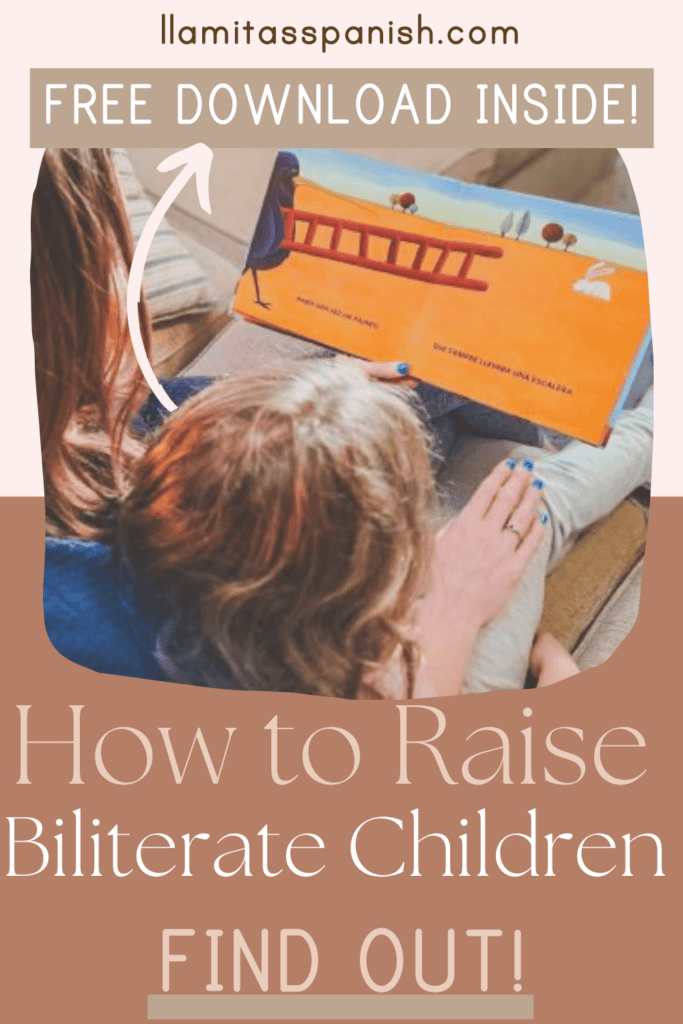
Post contains affiliate links.
Biliteracy starts before the child can read independently.
It starts with simple but powerful story times, and teaching your child the sounds and patterns of the language. It is a vital part of becoming fluent in a foreign language.
Table of Contents
What is Biliteracy?
By definition, biliteracy is being able to read and write fluently in two languages.
Just as we learn to speak, AND read and write in our dominant language, we should also prioritize developing those skills in our target, or minority, language.
The mission of many Dual Language Immersion (DLI) programs across the United States is for all students to reach high level of academic achievement and biliteracy. It is foundational to the process of educating in two languages.
‘The Seal of Biliteracy’ is an award given by many states in recognition of students who have achieved proficiency in two languages.
All this to say, biliteracy is recognized as an essential part of bilingualism and should be valued in equal measure to teaching your kids how to speak another language.
Free Download
Before we get into the tips and resources for raising a biliterate child, be sure to download this FREE 5-Step Roadmap that covers the same content as this post.
To access it, simply login to our Spanish Freebie Library.

Build a Bilingual Bookshelf
Children are very visual and tactile. They will touch, feel and explore their surroundings, so take advantage of this by creating a print rich environment at home.
Book baskets, magazine racks and front-facing book displays are all excellent ways to store books. When children have the reading material readily accessible and at their eye level, they are far more likely to engage with it spontaneously.
It may feel a little silly, but crouch down to their level and view the room from their perspective. Where are your eyes drawn? Can they easily access age appropriate books?
“Books plant the first seed in the garden of education
Top Spanish Book Recommendations
Books have come a long way! Explore these related links to learn about our top recommendations:
- Binibi Musical Books for Toddlers and Preschoolers. Adorable sing-along books in Spanish!
- Spanish Reading Wands with Habbi Habbi. They are bilingual and have words, phrases, and entire story books.
- Spanish Audio books. Great for on the go and bedtime.
- Shine-a-Light titles with Usborne Books and More. Shine a flashlight behind the pages to reveal hidden images! Great for ages 3-12.
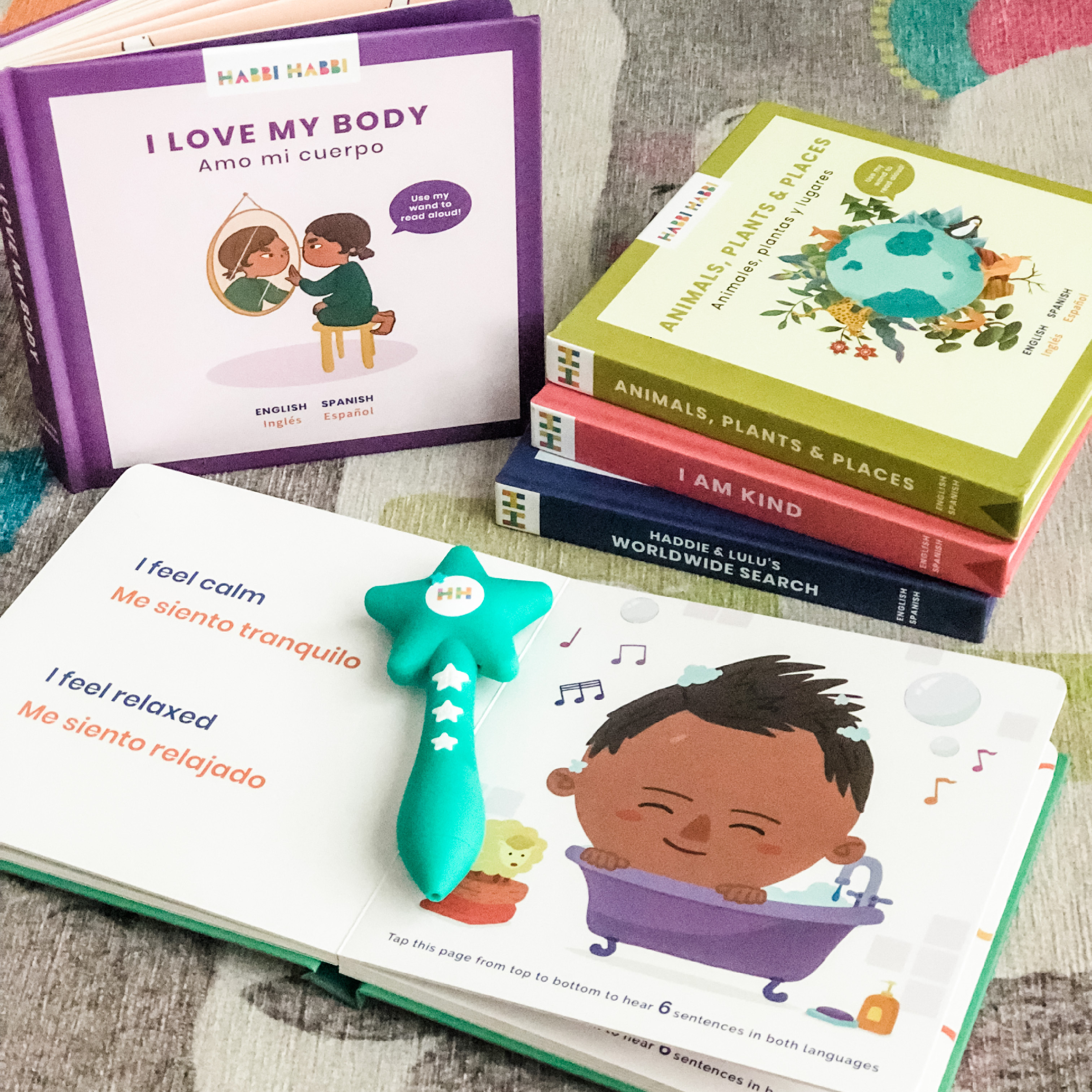
Read Aloud
We are intrinsically wired for sharing stories. It is simply human nature to love hearing, sharing and reading stories.
Reading aloud has incredible power beyond literacy development. It bonds families and makes memories that are shared for a lifetime. I’m sure you have inside jokes with your family that stem from a memorable story.
Reading aloud also supports vocabulary acquisition, while strengthening cognition, attention span, relationships and empathy.
Related Post: Best Spanish Usborne Books
Repeat, repeat, repeat!
Introduce new titles, but also honor their requests to read the same book over and over again.
Repeated readings have benefits like building vocabulary acquisition and memorization, whilst nurturing family bonding and shared memories.
So next time they ask to read ‘La oruga muy hambrienta’ for the hundredth time that week, just say yes, and then follow with a new story!
Learn about Phonics
Learn the Sounds
Learning the sounds of the letters should be the first priority. Our thematic Llamitas Spanish curriculum levels include native speaker audio for phonics and pronunciation work.
Phonemic awareness can also be developed by using songs and rhythmic phrases. We use short, authentic poetry recitations in our curriculum and sound and syllable listening activities.
Another great resource is ‘Canta las letras’ by 123 Andrés.
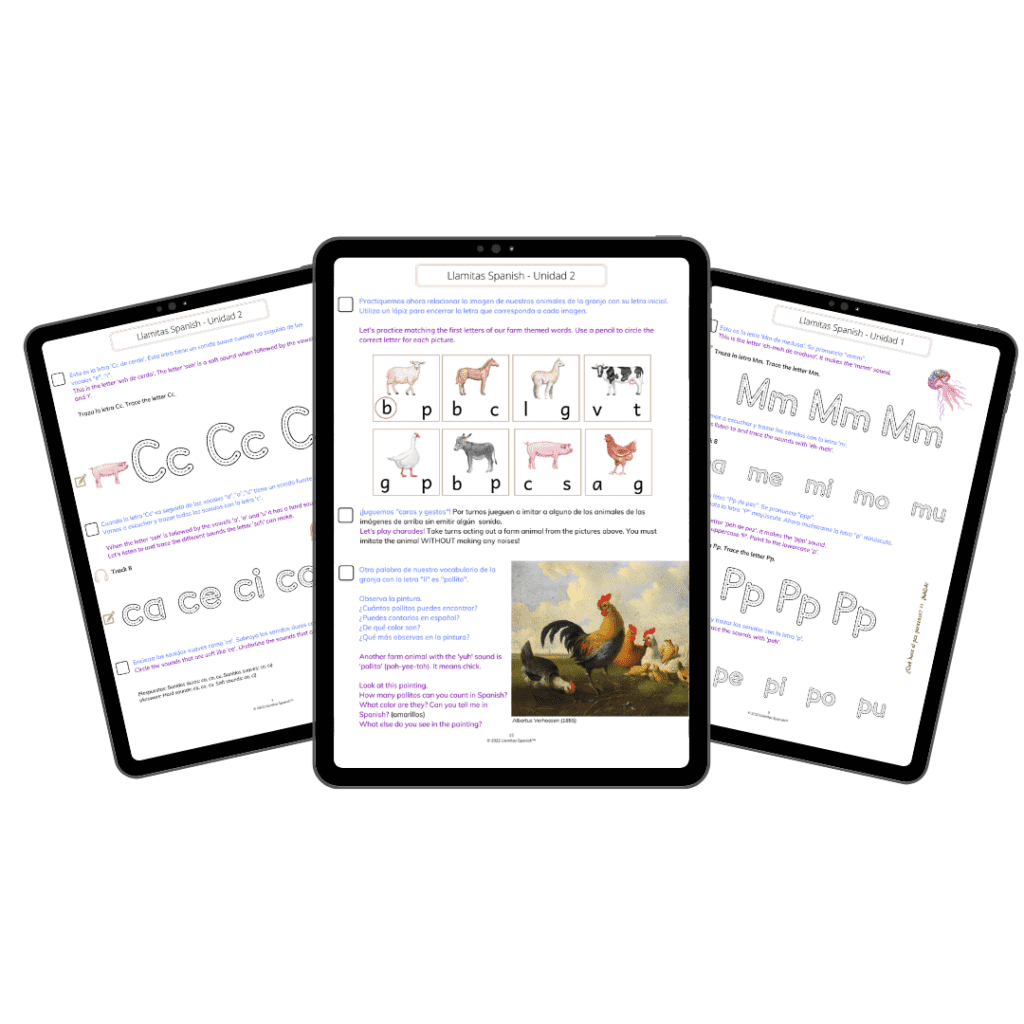
Related Post: Spanish Leveled Books
Learn the Letters
Tracing and letter recognition is the next layer to phonics work. Handwriting practice and fine motor skills are also developed through the Llamitas curricula activities.
Some families choose to teach the alphabet in the minority language first, or simultaneously with the dominant language.
Personally, we chose the latter. Sometimes mixing happens, but your child will eventually master both and differentiate as they get older.
Related Post: Should your Kids Be Learning Spanish and English Phonics at the Same Time?
Build Comprehension Skills
Being able to discuss stories and understand context, while picking out key bits of information, are important comprehension skills.
There are a few ways you can develop this including getting into the habit of talking about stories and asking questions, as well as using different forms of input like auditory.
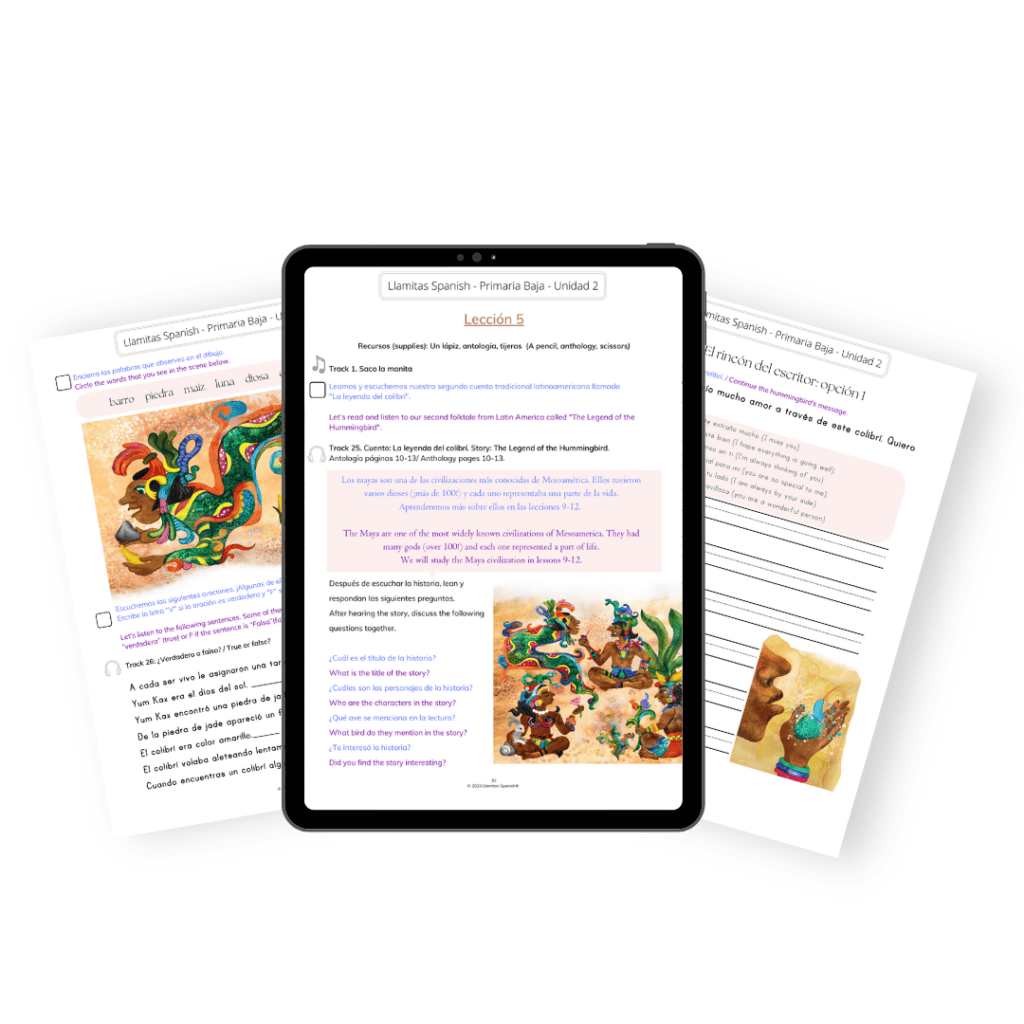
Talk about Stories
Discuss the books you read in a fun way!
“Children are made readers on the laps of their parents”
Ask your child what they thought of the characters, the plot, the ending. Ask questions that encourage them to form opinions, such as: ‘What part of the story did you like most?’ ‘Which is your favorite character?’ ‘What do they think will happen next?’
Talking about stories will help develop your child’s communication skills and critical thinking.
It can also help you figure out the genre or type of books and characters they most enjoy, so you can surprise them with more in that series, or written by the same author.
Our Level 2 Curriculum develops comprehension skills through an anthology of Latin American folktales. Each story includes a series of comprehension and grammar activities to develop biliteracy.
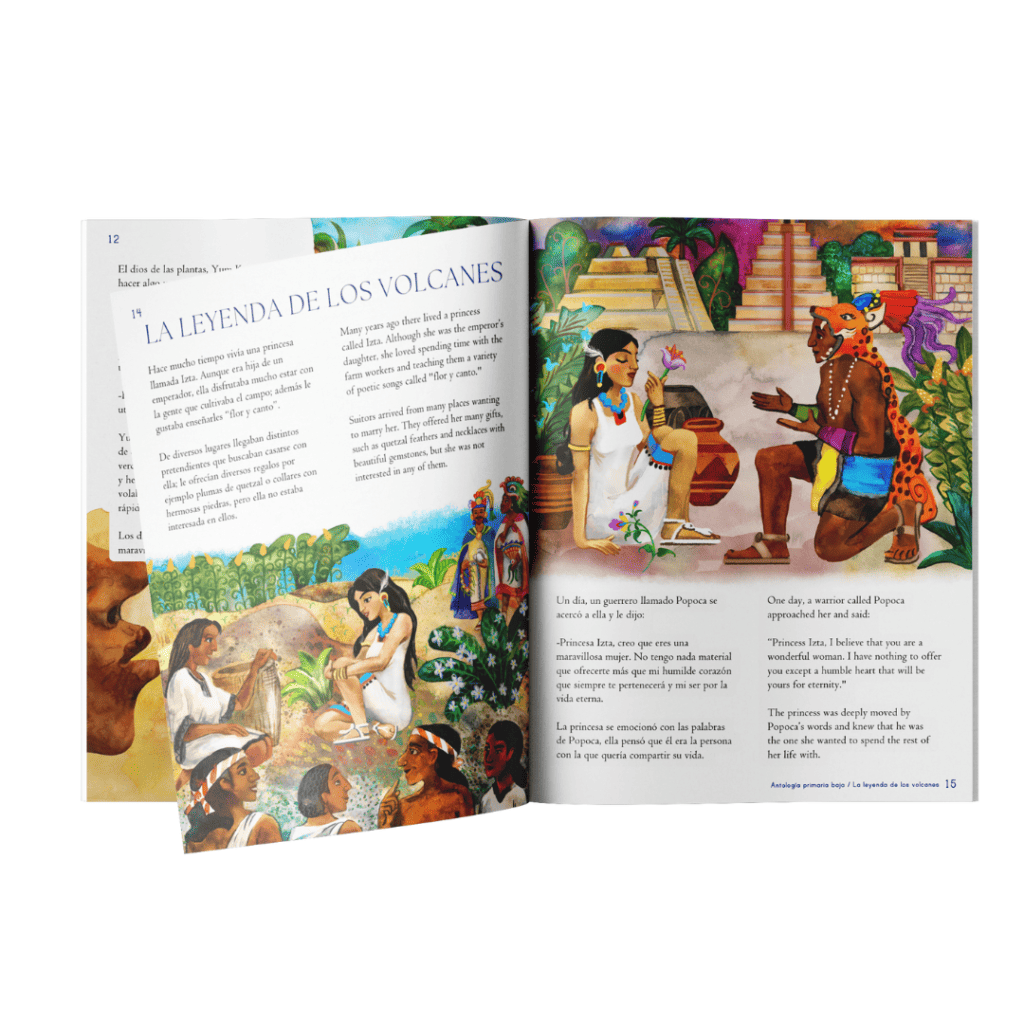
Listen to Spanish Story Podcasts
Audio books are a great way to develop listening comprehension skills. We love the Yoto Player and app for listening to stories in both English and Spanish.
Spanish podcasts for kids like ‘Eat your Spanish’ (beginners) and ‘Hoy Quiero Contarles’ (advanced) are perfect for on the road!
Play Spanish Story Apps
Leverage your child’s screen time with incredible apps like FabuLingua where your child learns Spanish through comprehensible stories and games.
Related post: An Honest Review of the FabuLingua Spanish Learning App
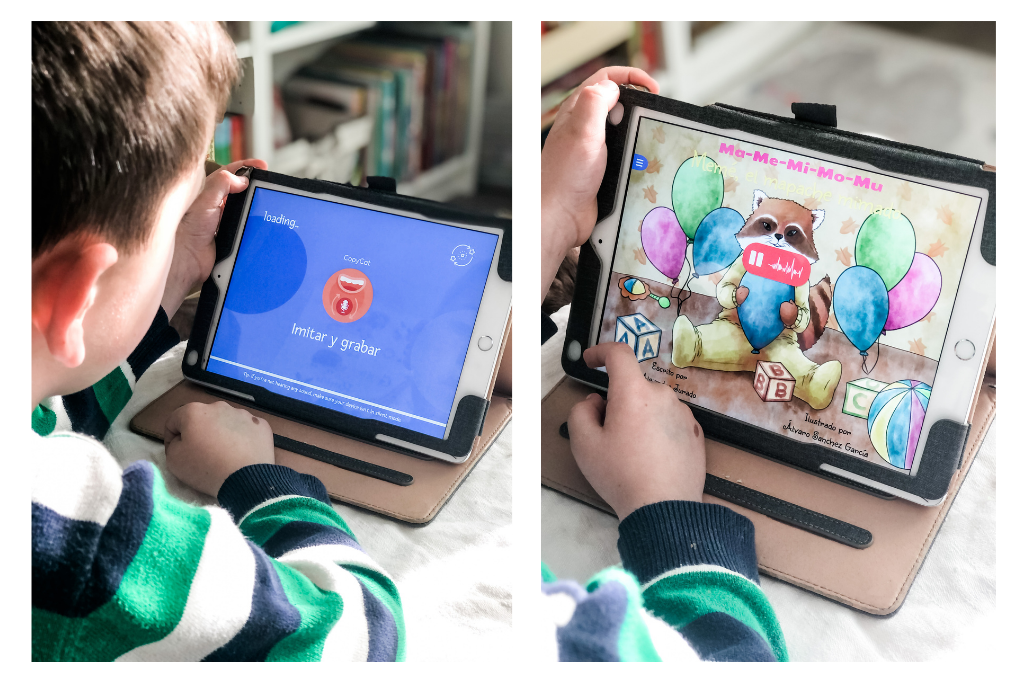
Play Vocabulary Games
Learning vocabulary with hands-on games and movement is ideal for younger kids.
Flashcards often get a bad rap. But at Llamitas Spanish we harness the child’s love for games to teach the unit vocabulary with gorgeous watercolor flashcards.

Fun Ways to Use Flashcards
Here are a few games you can play with flashcards to develop biliteracy. For a complete round-up of ideas see this related post.
- Bingo
This is a fun and easy game that even younger children can play. We have a FREE Llamitas Spanish bingo download in our Freebie Library. We also highly recommend Lil’ Lotería from Lil Libros.

- Matching and memory games
This is another fun game for little learners and is a fantastic way to build memory skills.
- Flashcard fishing
Simply add a magnet to back of the flashcard and another to a string on a wooden stick. Then go fishing! As the child pulls up a flashcard from the imaginary ‘ocean’, you can repeat the words.
- Snap
Make two or more copies of each flashcard and laminate them to enjoy a fun and simple game of snap. Again, this is great for little learners that cannot read yet.
- Pictionary
For older children you can enjoy drawing pictures of the vocabulary and have someone guess what it is.
- Hide and seek
My children love this games. Just hide the flashcards around the house and they have to search for them. They can only get the point if they bring it to you and say its name.
- Scavenger Hunts
We love a good scavenger hunt! This can be trying to find objects around the home to match the vocabulary flashcards, or even venturing outdoors to find the items in nature.
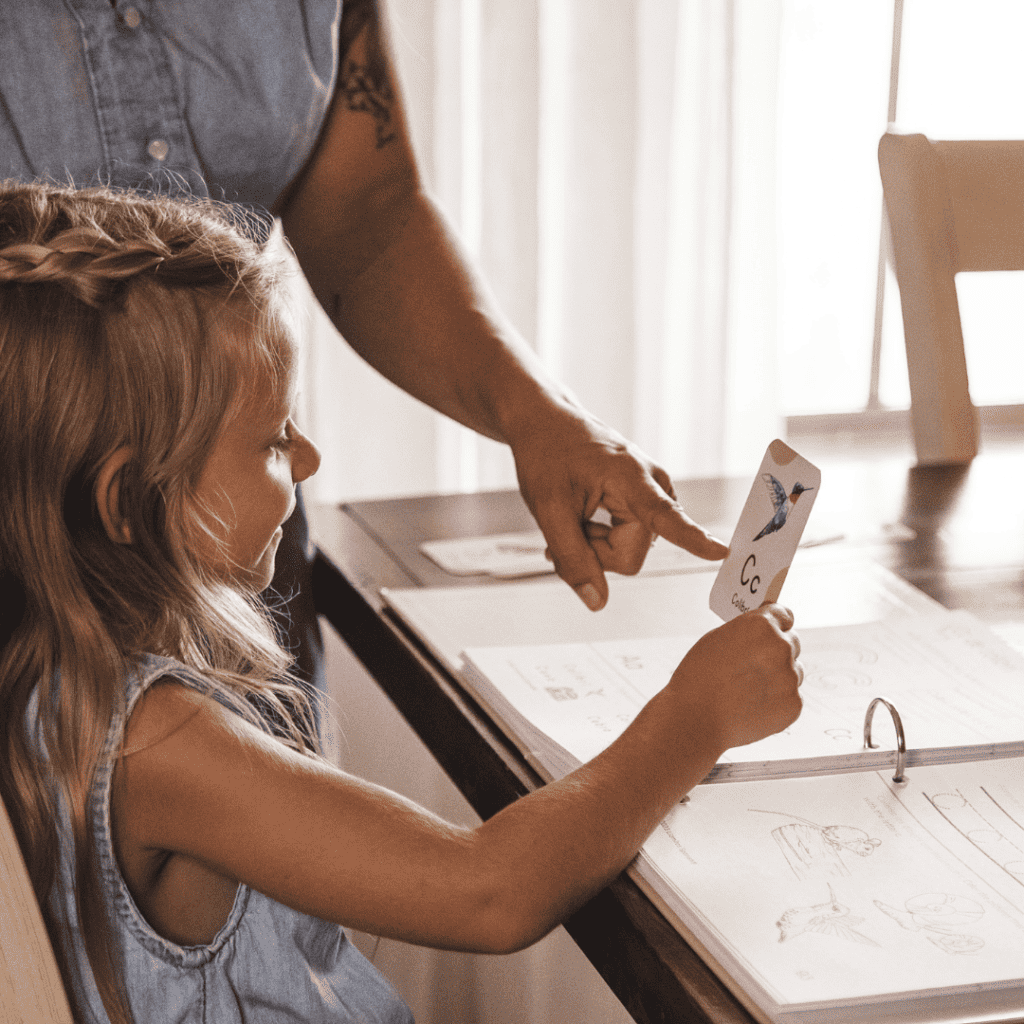
Music and Movement
Reciting lyrics and combining words with actions is a powerful combo for second language acquisition!
Gross movement games like Simon says and charades also support your child in consolidating their learning while having fun in the process.
Our curriculum levels include plenty of fun games, movement activities and songs!
Spanish Biliteracy Curriculum
Our Llamitas Spanish curriculum levels are designed to provide you with academic, structured lessons to support your child’s biliteracy and bilingual journey in the preschool and elementary years.
Preschool Spanish Morning Binder
The Preschool Morning Binder is the perfect starting place for preschoolers. Lessons are short and simple and focus on the Spanish alphabet, and blending CV syllables (like ma, me, mi, mo, mu).
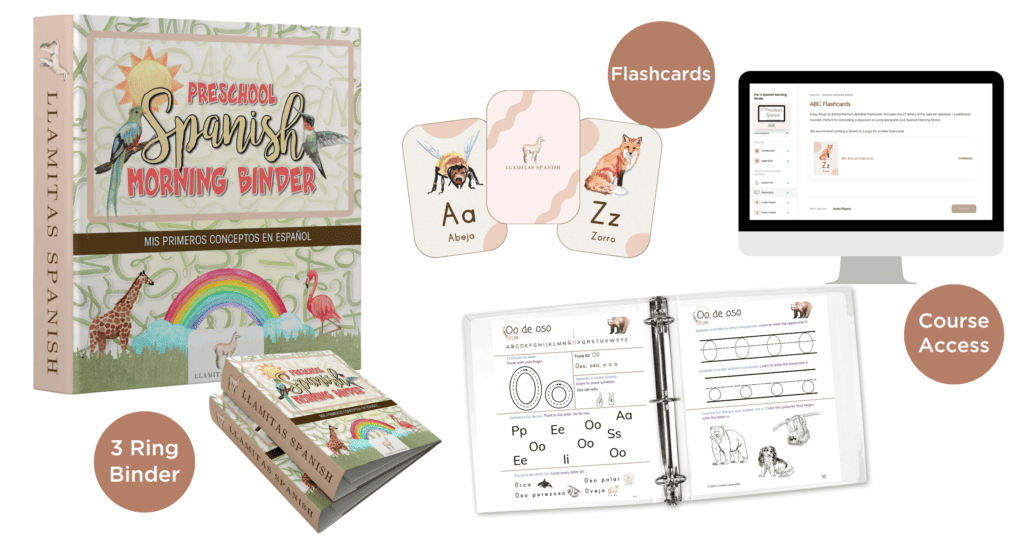
Level 1 Curriculum
Level 1 Curriculum includes 12 thematic Spanish units that develop foundational early academic skills in phonics, math, literacy, music and fine and gross motor.
Perfect for beginners!
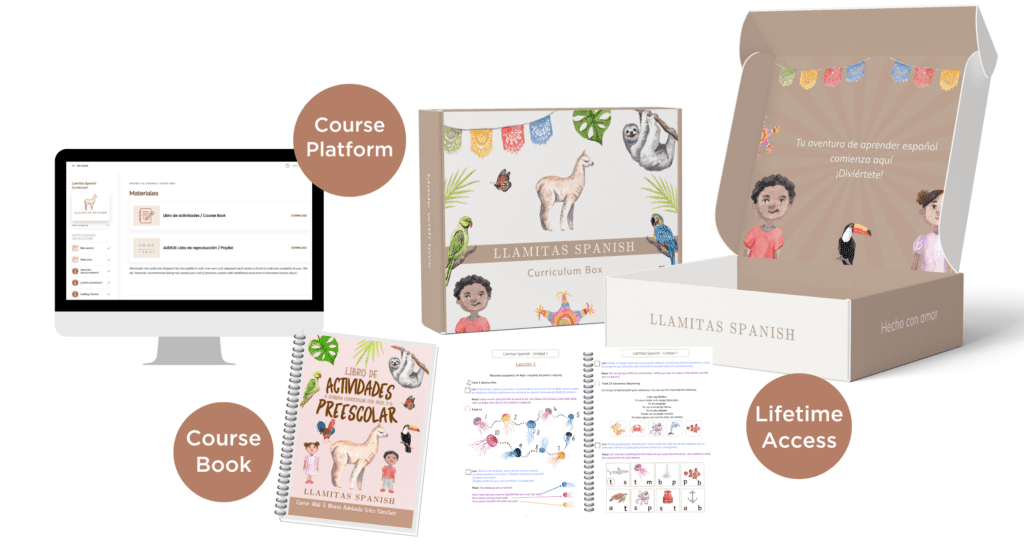
From ‘la granja’ (farm) to ‘el espacio’ (space), the units lay the foundations in Spanish phonics and reading.
Level 2 Curriculum
Level 2 Curriculum develops biliteracy by teaching grammar and reading through the context of authentic folktales and 6 more thematic units.
Perfect for intermediates!
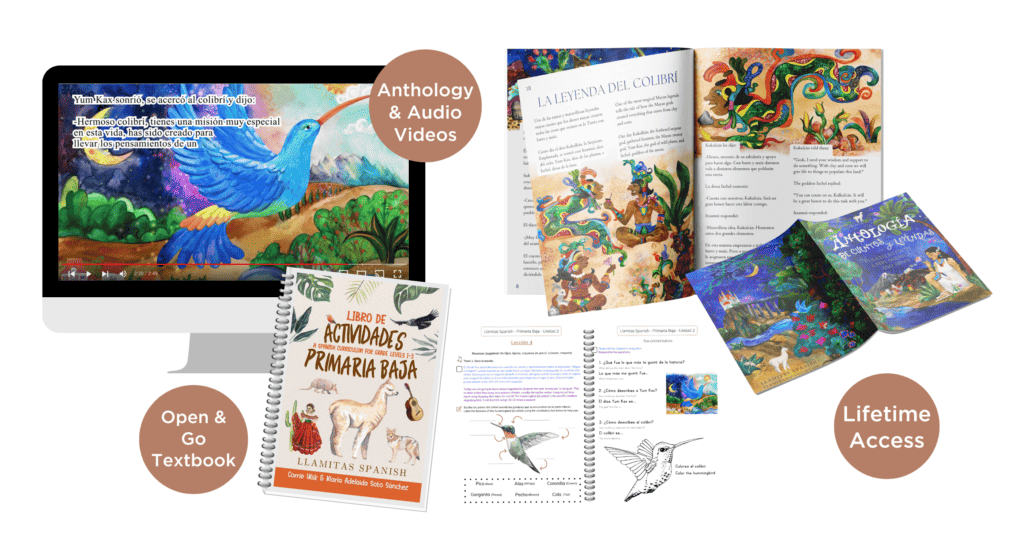
This program has truly been ‘hecho con amor’ and we are honored to have outstanding parent testimonials!
Related Posts:
Spanish Leveled Books & First Readers

